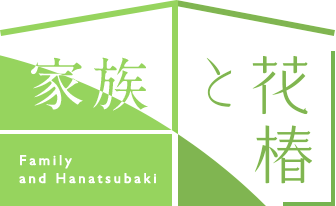
今回のテーマは家族です。
1937年の創刊から50年代までは政局の変動や戦争の影響で荒廃した住環境を整える必要があったため、建築やインテリア特集など住まいに関する企画が組まれましたが、高度経済成長期が始まる60年代に入ると、関心はその中に住む人、つまり家族へと移行します。急速に欧米化してゆく日常を前に、「家族とは何か」を考えざるを得なかった60年代。カジュアルな企画から硬派な特集まで、さまざまな角度から新しい家族像をとらえた60年代の特集の中からいくつかご紹介します。
The theme of this issue is family.
Because the period since the foundation of our magazine in 1937 through to the 1950s was a time in which the country needed to focus on putting the political system in order and rebuilding the war-devastated towns and cities, we focused our attention on the home including running special features on construction and interior design. As Japan entered the high economic growth period of the 1960s, our focus gravitated toward the people living in these homes; in other words, the family. With the rapid westernization of lifestyles in the 1960s, it was inevitable that people would begin to think about the definition of what constitutes a family. In this issue, we would like to introduce some of our special features from the 1960s that explored the new family structure from a myriad of angles that ranged from casual pieces to reports on social issues.
1963年7月号「中本一家のヴァケイション」
資生堂が当時提供していた香川京子主演のテレビドラマ『ホラ、しあわせが』をもとにした家族特集です。ここではドラマの主役、中本一家を参考に、これからの家族時間の過ごし方の一例としてヴァケイションを提案しています。特集に添えられるのは、劇作家・内村直也が寄稿した「ホームドラマの理想像」。ホームドラマの語源に迫る鋭い論考を展開しています。
“The Nakamoto Family’s Vacation”
in the July 1963 issue
This special feature on family was based on the TV drama sponsored by Shiseido at the time called, “Hola, Shiawasega” (Look, It’s Happiness), starring Kyoko Kagawa. In this feature, the Nakagawa family was used as a model to illustrate how taking vacations was one way of spending time together as a family. Accompanying the special feature was a contribution by playwright Naoya Uchimura entitled “The Ideal Family Drama.” This poignant essay explored the root of the family drama.
1964年後半連載
「ファミリィコーナー 家族会議」
「ヴァケイション」や「おしゃれ」、「読書」、「恋愛と結婚」など世代や性別の間で価値観が異なる話題をテーマに、家族談義を繰り広げる連載です。当時の定説を古めかしく感じたり、昔から変わらぬ意見に感心したりと読みごたえがあります。前述の劇作家・内村直也と作家の佐藤紅緑の娘で同じく作家の佐藤愛子が父と母役で登場しています。
The “Family Discussion Corner”
serialized through the latter part of 1964
This serialized column on the family revolves around discussions about vacations, style, books, love and marriage, and other topics in which people of different generations and sexes hold differing value judgments. It’s a worthwhile read presenting readers with some views that may appear old-fashioned, while others are surprisingly relevant still today. The role of the father in the discussions is played by the above-mentioned playwright Naoya Uchimura, and the mother by writer Aiko Sato, daughter of writer Koroku Sato.
1967年9月号「うちにいる女性」
主に専業主婦をテーマに、社会的接触が少なくなる家庭にとどまることから起こる心の変化を考察しています。美しくあるためには緊張感が必要、など、時代は違えども、今でも通じる論説に頷く方も多いはずです。
“Women Who Stay at Home”
in the September 1967 issue
This piece mainly revolves around the theme of the homemaker and explores the transformation in the state of mind that occurs when people stay at home and have limited contact with the outside world. There is no doubt that despite the different era in which this was written, many readers today would still nod in agreement about sentiments expressed in this column including the need for a little bit of tension in one’s life to stay beautiful.
1968年10月号「特集・現代家族」
『花椿』の中で最も硬派な特集と言えるのではないでしょうか。核家族化・情報化が家族にもたらす問題について、「あるある」エピソードを交えながらそこに潜む問題点を挙げ、筆鋒鋭く現代社会を批評しています。個人が画一化されたともいわれる今の世に読まれるべき論説です。
“Special Feature: The Modern Family”
in the October 1968 issue
This could probably be regarded as the most pensive special feature dealing with social issues ever to be published in Hanatsubaki. This sharp-witted critique on modern society uses common episodes from people’s lives to raise and explore underlying family issues that have arisen due to the trend towards the nuclear family and an information-oriented society. This column is a must-read for readers today as we deal with standardized individualism.
※写真の著作権、モデルの肖像権について、現在許諾の申請を進めていますが一部、ご連絡が取られていない箇所がございます。掲載内容に関してお気づきの点がある方は編集室までご連絡ください。
We are in the process of applying for copyrights for photographs and model usage licenses, but we are still unable to contact the source for a few of the images. Please contact the Hanatsubaki Magazine if you have concerns regarding any of the images on this page.






